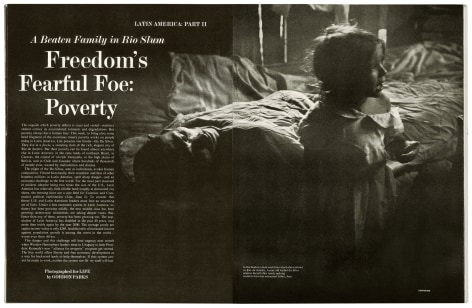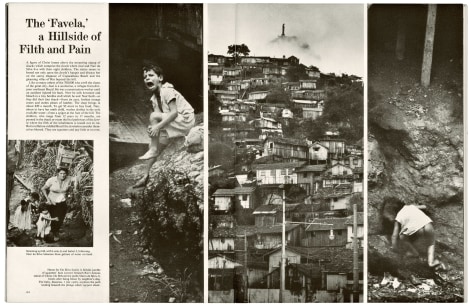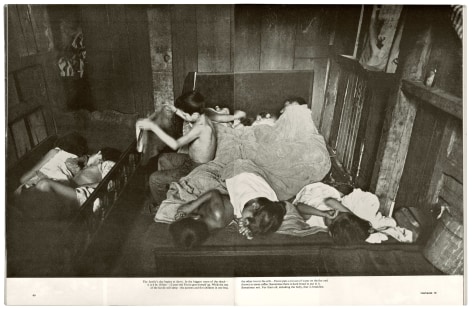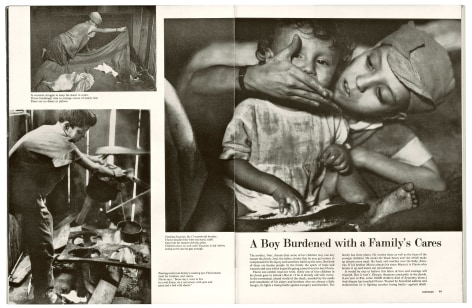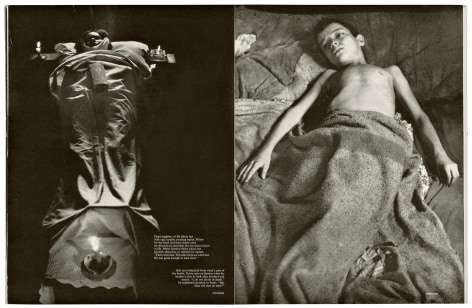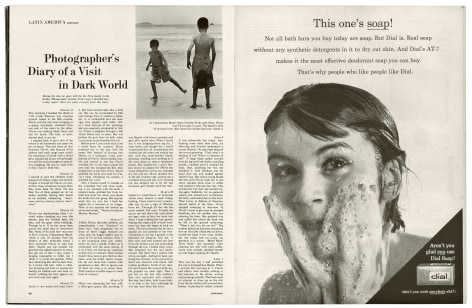
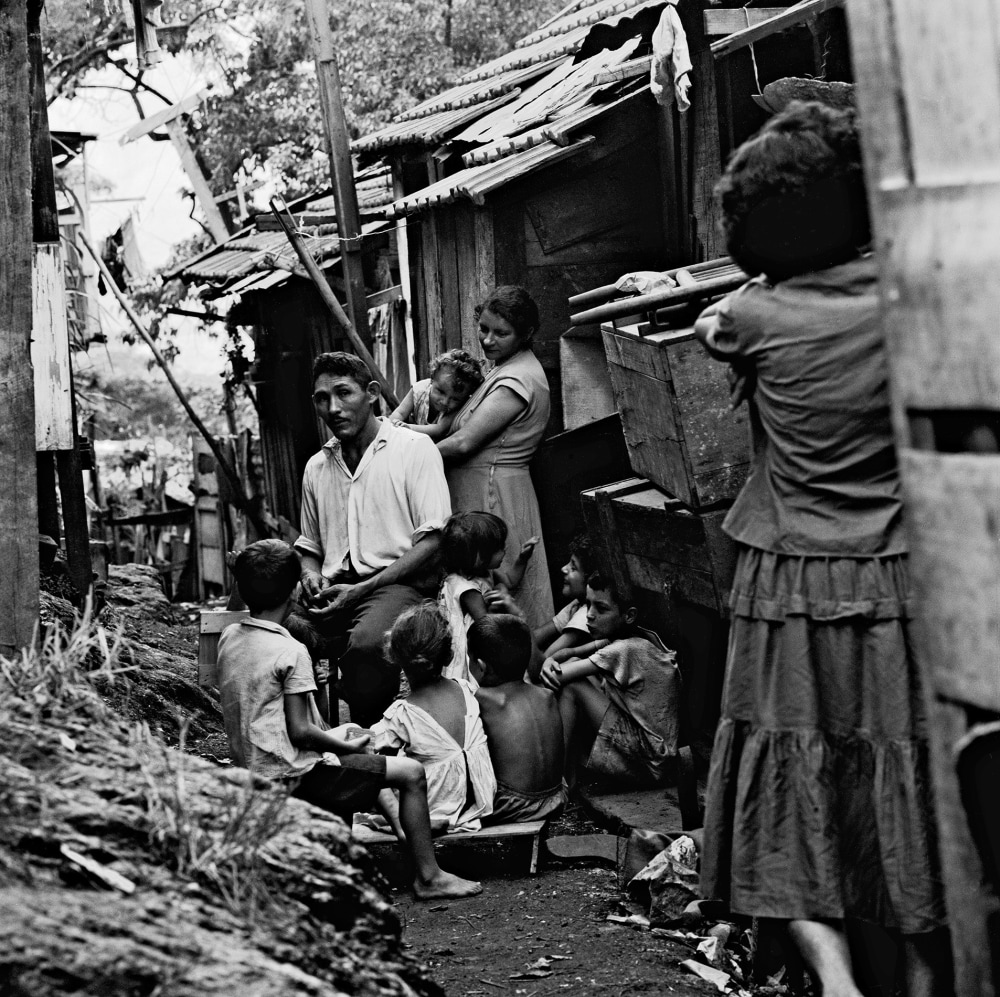
Untitled, Rio de Janeiro, Brazil, 1961.
In 1961, Life sent Parks to Brazil to shoot a story on poverty in Latin America, concentrating on the favelas, the infamous hillside slums of Rio de Janeiro. At the time, these were home to more than 700,000 people. In one favela, called Catacumba, or Catacomb, death seemed to close in from all sides. The place was riven by malnutrition and disease; open sewers ran between pitiful shacks. Despite his familiarity with poverty, Parks was shocked by the conditions: “Pockets of poverty in New York’s Harlem, on Chicago’s South Side, in Puerto Rico’s infamous El Fungito seemed pale by comparison. None of them had prepared me for . . . the favela of Catacumba” (Voices in the Mirror, 1990).
Parks was initially assigned to photograph a series of indigent fathers in the favelas—people his editors believed would best personify the wretchedness of the place. While climbing the hills to the slum, behind the glamorous Rio shoreline that tourists knew, Parks and José Gallo, his Life contact, stopped to rest beneath a jacaranda tree. There they spotted a wan, emaciated boy carrying a tin of water on his head. He stopped momentarily, keeling over with a violent cough, and then, meeting Parks’s gaze, flashed a broad and completely unexpected smile. To Parks, this boy, Flavio da Silva, embodied the brutality of poverty—and he decided to shift the focus of his story.
Flavio invited Parks and Gallo into his family’s tiny home: four walls of salvaged wood beneath a rusted tin roof where the daily battle for life was punctuated by affection, humor, and savagery. The eldest of eight children, Flavio introduced the rest of his family: father José (a kerosene salesman), mother Nair (pregnant with another child), sisters Luzia (the pretty one), Albia, Isabel, and Maria, and brothers Mario (the bad one), Baptista, and baby Zacarias.
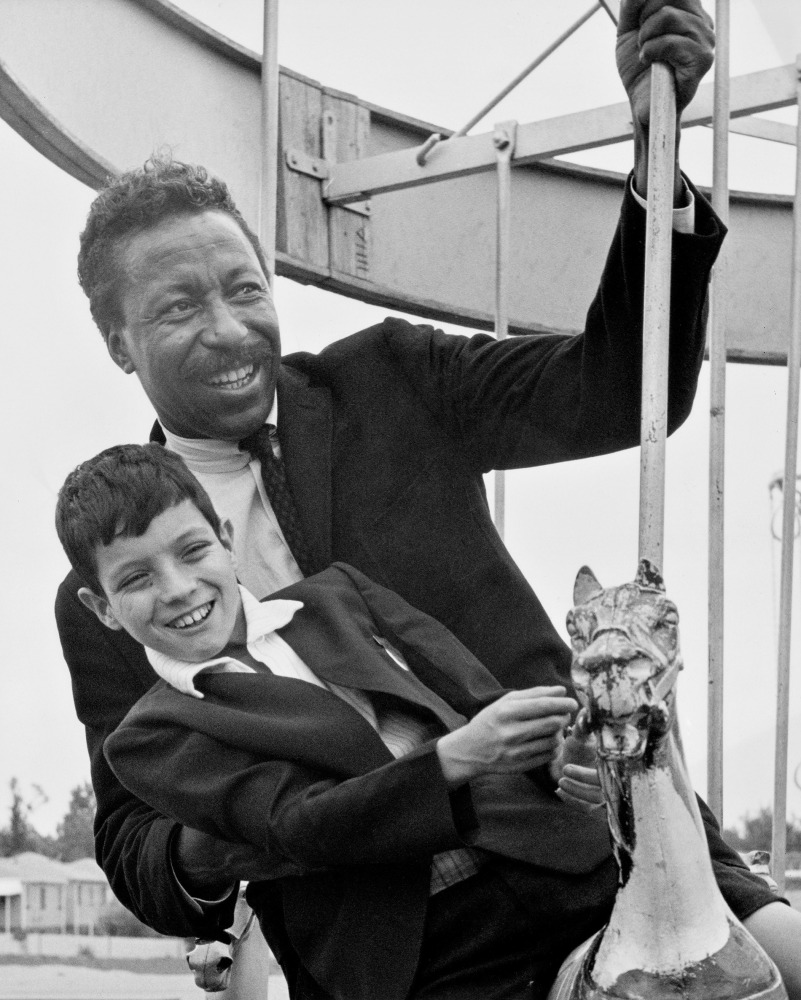
Unknown Photographer, Gordon Parks and Flavio da Silva, Denver, Colorado, 1960
Parks spent weeks documenting the lives of Flavio and his family, recording the filth in which they lived, the daily pain they endured, and moments of laughter and tenderness they shared. In the process, he learned that Flavio was suffering from severe bronchial asthma and was not expected to live more than another year. After a moving good-bye, Parks returned to New York and presented his story to the editors at Life. He expected that it would merit the magazine’s cover, but when the preliminary layout for the article appeared, he was shocked that it contained only a single photo of Flavio. Parks immediately typed up his resignation letter. Fortunately, for Parks and Flavio alike, the editors reconsidered, and the story—“Freedom’s Fearful Foe: Poverty”—was published across ten full pages on June 16, 1961.
The piece generated an enormous response from Life readers, garnering enormous praise for Parks and galvanizing the public to send enough money to the da Silva family to move from the favela. Within a month, $30,000 had been donated, giving Parks the means to return to Brazil, relocate the da Silvas, and help Flavio obtain the medical attention he desperately needed. After a turbulent reunion in Rio and an uneasy departure for the United States, Parks himself delivered Flavio to the Children’s Asthma Research Institute and Hospital in Denver for treatment of his debilitating condition. The photographs of the two reveal the degree to which Parks held himself personally responsible for the well-being of the boy, and anticipate the tender but troubled connection they would maintain through letters and visits for the rest of their lives.
Flavio Amuses Smaller Brothers and Sisters, Rio de Janeiro, Brazil, 1961
Flavio After Asthma Attack, Rio de Janeiro, Brazil, 1961
Catacumba Favela, Rio de Janeiro, Brazil, 1961
Untitled, Rio de Janeiro, Brazil, 1961
Untitled, Rio de Janeiro, Brazil, 1961
Flavio da Silva, Rio de Janeiro, Brazil, 1961
Flavio's Neighbor's Corpse, Rio de Janeiro, Brazil, 1961
Untitled, Rio de Janeiro, Brazil, 1961
Flavio Feeds Zacarias, Rio de Janeiro, Brazil, 1961
Family's Day Begins, Rio de Janeiro, Brazil, 1961

